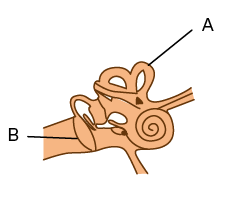CBSE Class 8 Science Chapter 10 Important Questions - Free PDF Download
FAQs on Important Questions for CBSE Class 8 Science Chapter 10 - Sound
1. Will the Sound Chapter Class 8 Questions Help me?
Class 8 Science ch 10 important questions are currently available on our website in PDF format with solution keys. These important questions of chapter sound Class 8 have been compiled by our professionals keeping in mind the question pattern as given by CBSE and the questions appearing in previous years. The questions compiled are that they would help students better prepare for the upcoming examinations, grow their knowledge, strengthen their base, and boost their confidence. NCERT Chapter 8 Science essential questions are also included here to ensure students get the best preparation possible before their examinations.
2. What are Some of the Class 8 Chapter 10 Important Questions?
The Class 8 Chapter 10 crucial questions are now available on our website with a detailed analysis of the questions and a solution key. Chapter 10, Sound, is a very vital chapter that appears every year in examinations. We have compiled some MCQs, very short questions, short questions, and long questions to aid the students. This helps the students strengthen their knowledge about the Sound chapter. Some of the most common questions we see appearing each year are:
Define frequency. What is the unit of frequency?
Describe the loudness of sound.
Describe oscillatory motion.
Explain how sound is produced in human beings.
What are the harmful effects of sound pollution?
How can we control noise pollution?
3. What is an oscillatory motion?
Periodic or oscillatory motion is defined as a motion that repeats itself. Due to a regulating force or torque, an item in such motion oscillates around an equilibrium position. Regardless of whatever way the body is pushed, such force or torque tends to restore (return) the system to its equilibrium position. Two conditions must exist for vibration to take place and they are toughness and momentum. The complete explanation along with important questions of Class 8 Science Chapter 10 is easily available on Vedantu app and website.
4. Explain larynx function.
The larynx, or voice box, produces sound in humans. The larynx is located near the top of the windpipe. Because the vocal cords are stretched over the larynx, a tiny slit is left between them. The larynx moves when we swallow something.Two vocal cords can be found in the larynx. Between them, there is a little space through which the air travels. When we talk, our lungs drive air into the gap, which causes the vocal cord to vibrate, producing sound.
5. What is noise pollution?
Any unpleasant or undesired noise that interacts with or affects humans or wildlife is referred to as noise pollution. Noise pollution, despite the fact that it is always there, receives less attention than water and air quality concerns since it cannot be seen, tasted, or smelled. It is the presence of loud, unwelcome, and irritating sounds in our surroundings. By blowing their horns and making noise with their engines, motor vehicles on the road pollute the environment. For revision notes and NCERT solutions for Chapter 10 Class 8 Science, visit Vedantu.
6. How is noise pollution caused?
Outside noise is mostly generated by machines, transportation, and propagation systems all around the world. Poor urban design can lead to noise disintegration or pollution. For example, sound pollution in residential neighbourhoods can be caused by industrial and residential buildings being built next to one other. Loud music, transportation (traffic, rail, aircraft, etc. ), lawn care maintenance, building, electrical generators, explosions, and people are some of the most common sources of noise in residential neighbourhoods.
7. What is the difference between music and noise?
Noise is made up of noises with frequencies that vary in value from as low as you can hear to as high as you can hear. But not always in equal strength. The term "musical sound" refers to a sound that is agreeable to the ear. A harmonium's sound is pleasing to the ear. A sitar's string produces a musical sound as well. However, if a melodic sound grows too loud, it ceases to be melodious. To know more, solve the important questions by visiting the page Important questions for Class 8 Science and download a free PDF of the same.

















